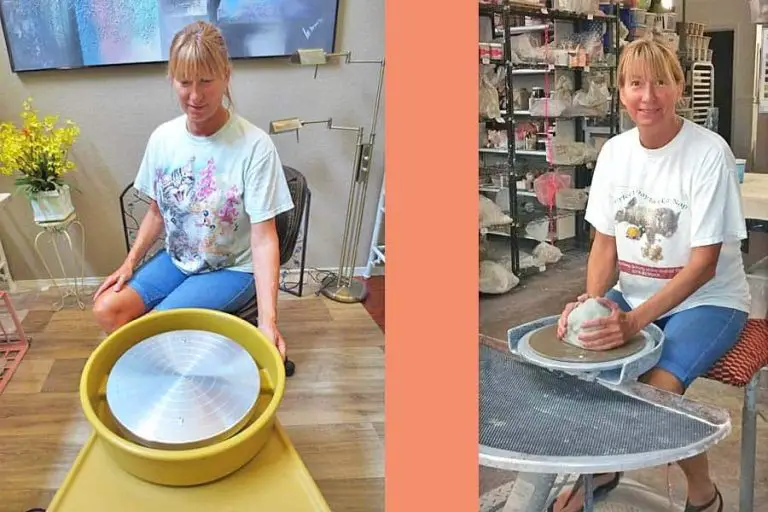How Do You Hollow Out Clay?
Hollowing out clay is an essential technique used in pottery, sculpture, and other clay crafts. It involves creating an opening in a basic clay form to remove interior clay and create a hollow space within. The process allows clay artists to create light yet strong vessels, bowls, vases, sculptures, and more. Hollow forms require less clay, dry faster, and fire more evenly.
Hollowing has many uses across pottery, sculpture, and decor. Hollow containers like mugs, vases, and jars provide utility while hollow sculptures allow for more intricate, lightweight designs. The technique opens new possibilities for clay crafters through the interplay of interior and exterior form.
Gather Materials
To properly hollow out clay, you will need to gather the following materials and tools:
- Clay – Any air-dry or polymer modeling clay will work, such as Sculpey.
- Knife – An X-Acto knife with a sharp, angled blade works best for cutting the opening.
- Scoop or Spoon – Use a melon-baller, spoon, or other small scoop to hollow out the inside of the clay.
- Sponge – A natural sea sponge can help smooth the interior shape.
- Toothpicks or Skewers – Useful for refining the shape and smoothing seams.
- Acrylic roller or pasta machine (optional) – Can help condition the clay and achieve an even thickness on the walls.
Make sure you have a clean, flat work surface when hollowing clay. You’ll also need patience as hollowing clay can be a time-consuming, meticulous process.
Prepare the Clay
Properly preparing the clay is a crucial first step before hollowing forms. Clay straight from the bag or block tends to be stiff and filled with air pockets. You’ll want to wedge and knead the clay thoroughly to make it more malleable and remove any air bubbles. Here are some tips:
- Cut or tear a workable sized piece of clay from the block.
- Smear a little water on your work surface to keep the clay from sticking.
- Fold the clay over itself and press down firmly to squeeze out air bubbles.
- Rotate and repeat the folding/pressing action in different directions.
- Knead the clay by pressing into it with the palms of your hands and pushing forward.
- Flip, re-shape, and repeat kneading until the clay feels smooth and elastic.
- Avoid overworking the clay which can make it dry out.
- The clay is ready when it’s pliable without stickiness or cracks.
Take your time with this step and be diligent about working the clay thoroughly from all sides. Well-prepared clay will be easier to shape and less prone to cracking and breakage when hollowing forms.
Form the Basic Shape
After preparing the clay by wedging and kneading it, you can begin forming the basic enclosed shape for hollowing. For a rounded shape like a bowl or vase, start by molding the clay into a ball shape. Use your hands to gently push the sides of the ball inwards and upwards to form a hollowed-out shape.
As you form the basic shape, support the clay from underneath with one hand while smoothing and shaping it with the other hand. Take care not to make the walls too thin at this stage – aim for roughly a 1/4 inch thickness. The clay should still be soft and malleable at this point to allow for adjustments.
Create a wide base for stability by gently flaring the bottom outward. Visualize the final proportions as you form – keep in mind the opening size needed later for hollowing. Refine the lip and rim as desired for the design. Allow the clay to firm up partially before moving to the next steps.
Allow Clay to Firm Up
After you have formed the basic shape of your sculpture out of clay, it is important to allow the clay to firm up some before attempting to hollow it out. If you try to hollow wet, soft clay, the walls are likely to collapse inward. Letting the clay dry and harden will make it more stable and easier to hollow without compromising the structure.
How long you need to let the clay firm up depends on factors like the thickness and size of the sculpture, the type of clay, and the drying conditions. Thicker clay will take longer to dry out. Letting it sit overnight, at least 12 hours, is usually sufficient. You may need to wait 24-48 hours for very thick or moist clay. Test the firmness and when it holds its shape but still yields slightly to gentle pressure, it should be ready for hollowing.
As the clay firms up, some cracking or warping can occur. Fill in any cracks with additional clay before hollowing if needed. Allowing the clay to dry partially makes the hollowing process easier and prevents the disappointment of a collapsed sculpture.
Cut an Opening
Once the basic shape has firmed up enough to hold its form, it’s time to cut an opening that will allow you to hollow out the interior. This opening should be cut at the top of your clay piece.
The opening needs to be large enough for you to reach inside to scoop out clay, but small enough that you’ll be able to easily close it up later. Aim for an opening about 1-2 inches wide. Use a knife or clay tool to cut out a circle or oval shape at the top of your clay piece.
Cut down at an angle so the opening is wider on the inside and narrower on the outside. This will make it easier to patch the opening closed later. As you cut, support the knife blade with your other hand to keep the line smooth and prevent jagged edges.
Be sure to stop cutting if you feel any resistance, as you don’t want to apply so much pressure that you distort the overall shape. Cut slowly and carefully. Once finished, you’ll have an access point ready for hollowing out the interior.
Hollow Out Clay
Once the basic shape has firmed up enough to hold its form, it’s time to hollow out the interior. There are a few main techniques for hollowing out clay:
- Using a knife – With a small, sharp knife you can carefully carve out sections of the interior clay. Work slowly and deliberately to remove clay bit by bit without puncturing the outer walls.
- Using a scoop or loop tool – These tools have a curved end designed for scooping and scraping out clay from the interior. They allow you to remove more clay faster than a knife.
- Using a sea sponge – A damp natural sea sponge can be used to gently rub away and absorb clay from the inside of your sculpture. This is less precise but can be effective for overall smoothing.
As you hollow out the inside, stop periodically to check the thickness of the walls by gently pressing on the outside with your finger. You want the walls to be an even thickness for structural integrity. Target between 1/4 to 1/2 inches thickness.
Work slowly and carefully during this step. Don’t puncture or tear the outer shell. As you get close to the desired hollowness, use gentler tools and a delicate touch to refine the interior shape.
Refine Interior Shape
Once you have hollowed out the basic interior shape, there are a few techniques you can use to refine and smooth the inside surface:
Sanding and Scraping: Use a variety of scrapers, ribs, and sanding tools to refine the surface. Sandpaper wrapped around a pencil eraser can help smooth curved areas. Move from coarser sandpaper to finer grits for a smooth finish.
Slip: Applying ceramic slip with a brush or sponge to the interior can help fill small cracks and smooth the surface. Let the slip set up a bit before smoothing further.
Paddling: Use a rounded clay shaping tool to compress and smooth curved interior surfaces. Apply even pressure and overlap strokes for the best results.
Burnishing: Rub a smooth stone over the surface to compress and seal the clay. You can also use the back of a metal spoon or other smooth tool.
Take your time refining the interior surface. The smoother you can get it, the nicer the final fired piece will look. Check for any cracks, air bubbles, or rough areas and continue to refine until you are satisfied.
Refine Overall Form
Once the interior of the clay sculpture has been hollowed out, you can refine the overall exterior form as needed. Carefully look over the entire sculpture and identify any areas that need smoothing or additional shaping. This is the time to perfect the aesthetic look and flow of your sculpture.
Use sculpting tools to gently smooth rough areas on the surface. Be careful not to press too hard or you may dent the thinner areas where clay was removed. You can also use loop tools or rubber tipped shapers to softly blend edges and create graceful contours.
If your sculpture has appendages like arms or legs, double check that they are securely attached and proportional to the body. Refine their shape and add details like fingers or toes if desired. Pay attention to symmetry and make adjustments as needed.
Consider the overall silhouette and profile of your sculpture from all angles. Walk around the piece, look at it from above, and ensure the form is aesthetically pleasing before moving to the next steps. Refining the exterior form is an important part of achieving your vision for the finished artwork.
Close the Opening
After hollowing out the interior of your clay sculpture, you’ll need to properly close the opening you initially cut to access the inside. To do this, take a small piece of clay and roll it into a “rope” shape. Use this extra clay to seal and close the access hole or opening.
Blend the seam of the added clay into the surrounding area by gently smoothing and blending with your fingers, clay shapers, or sculpting tools. The goal is to completely seal any gaps and create a cohesive, smooth surface where the added clay meets the original. Take your time with this step to avoid cracks or weak points once the clay is fired. Slowly massage and meld the new and old clay together.
You may need to add a bit more clay if the opening is larger or irregularly shaped. Continue smoothing out the clay and blending the seam until no cracks or gaps are visible. Having a well-sealed, sturdy sculpture will ensure it stays in one piece through the firing process.



